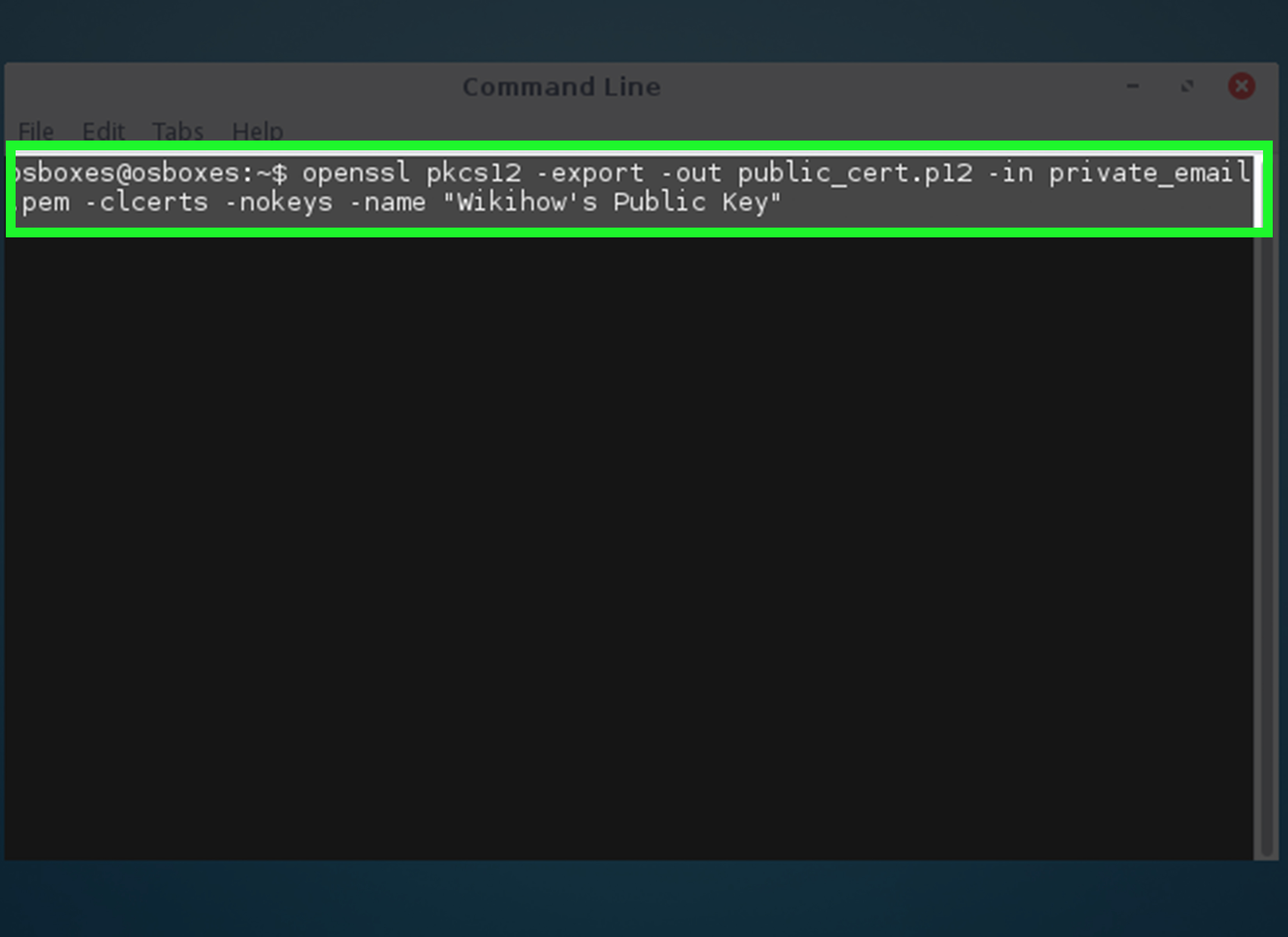
The default encryption algorithm is AES-256-CBC with PBKDF2 for key derivation. Conversely, the options regarding encryption of private keys when outputting PKCS#12 input are relevant only when the -export option is not given.
Openssl pfx to pem mac#
The PKCS#12 export encryption and MAC options such as -certpbe and -iter and many further options such as -chain are relevant only with -export. A PKCS#12 file can be created by using the -export option (see below). There are a lot of options the meaning of some depends of whether a PKCS#12 file is being created or parsed. PKCS#12 files are used by several programs including Netscape, MSIE and MS Outlook. This command allows PKCS#12 files (sometimes referred to as PFX files) to be created and parsed. p12) openssl pkcs12 -export -out certificate.pfx -inkey privateKey.key -in certificate.crt -certfile CACert.Openssl-pkcs12 - PKCS#12 file command SYNOPSIS

p12 ) containing a private key and certificates to PEM openssl pkcs12 -in keyStore.pfx -out keyStore.pem -nodes Convert a PEM file to DER openssl x509 -outform der -in certificate.pem -out r.der) to PEM openssl x509 -inform der -in certificate.cer -out certificate.pem For example, you can convert a normal PEM file that would work with Apache to a PFX (PKCS#12) file and use it with Tomcat or IIS. These commands allow you to convert certificates and keys to different formats to make them compatible with specific types of servers or software. All the certificates (including Intermediates) should be displayed openssl s_client -connect Converting Using OpenSSL Openssl req -noout -modulus -in CSR.csr | openssl md5 Openssl rsa -noout -modulus -in privateKey.key | openssl md5 Check an MD5 hash of the public key to ensure that it matches with what is in a CSR or private key openssl x509 -noout -modulus -in certificate.crt | openssl md5.If you are receiving an error that the private doesn't match the certificate or that a certificate that you installed to a site is not trusted, try one of these commands. p12) openssl pkcs12 -info -in keyStore.p12 Check a certificate openssl x509 -in certificate.crt -text -noout.Check a private key openssl rsa -in privateKey.key -check.Check a Certificate Signing Request (CSR) openssl req -text -noout -verify -in CSR.csr.If you need to check the information within a Certificate, CSR or Private Key, use these commands. Remove a passphrase from a private key openssl rsa -in privateKey.pem -out newPrivateKey.pem.Generate a certificate signing request based on an existing certificate openssl x509 -x509toreq -in certificate.crt -out CSR.csr -signkey privateKey.key.

Generate a certificate signing request (CSR) for an existing private key openssl req -out CSR.csr -key privateKey.key -new.Generate a self-signed certificate openssl req -x509 -nodes -days 365 -newkey rsa:2048 -keyout privateKey.key -out certificate.crt.Generate a new private key and Certificate Signing Request openssl req -out CSR.csr -new -newkey rsa:2048 -nodes -keyout privateKey.key.These commands allow you to generate CSRs, Certificates, Private Keys and do other miscellaneous tasks.

Openssl pfx to pem password#
See why customers choose Pleasant Password Server with a KeePass clientĪ compiled version of OpenSSL for Windows can be found here. Server Configuration > 3) Installing a 3rd Party Certificate > OpenSSL Commands Page last modified Mar 29 2022, 09:25 OpenSSL Commands


 0 kommentar(er)
0 kommentar(er)
